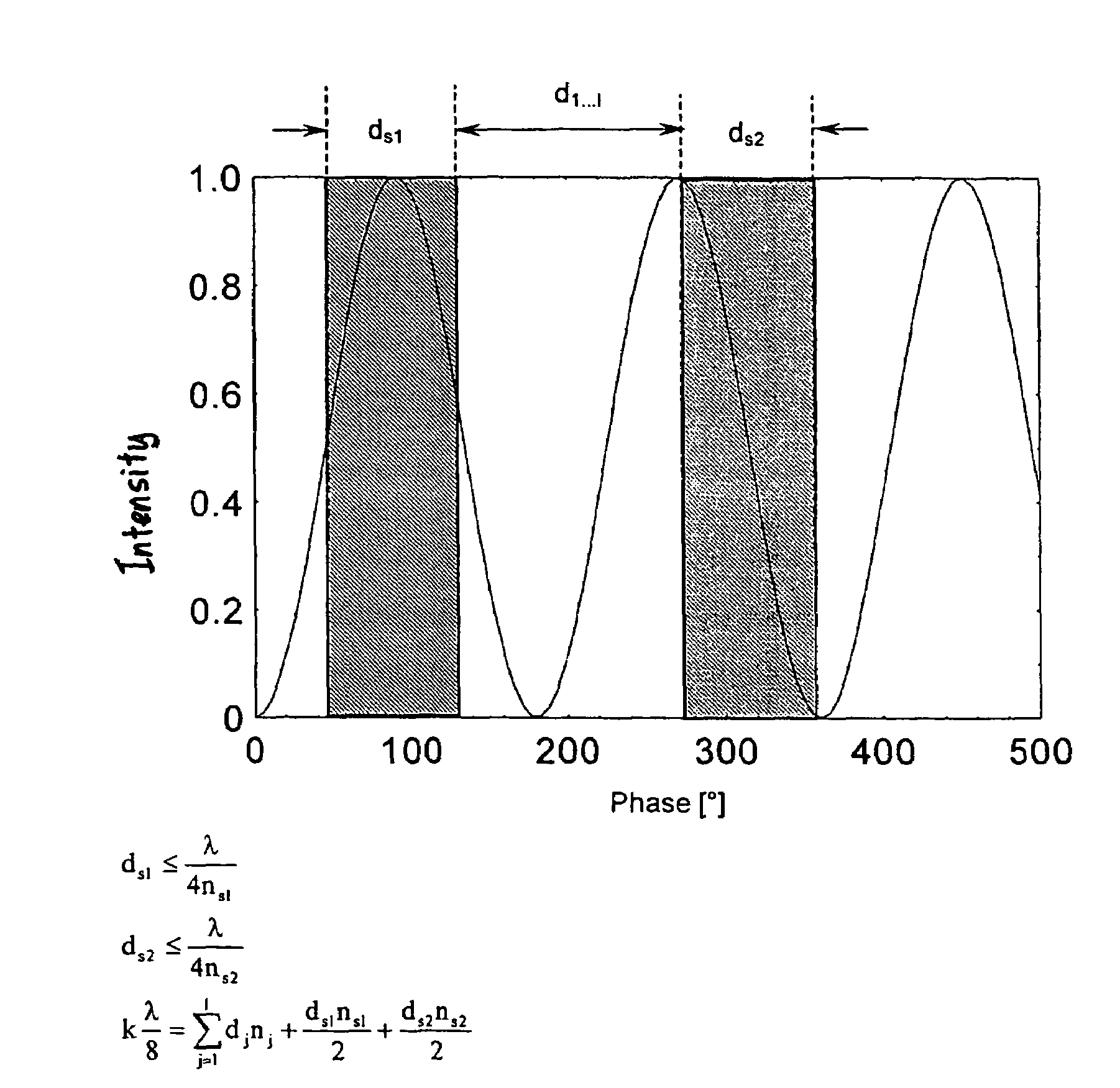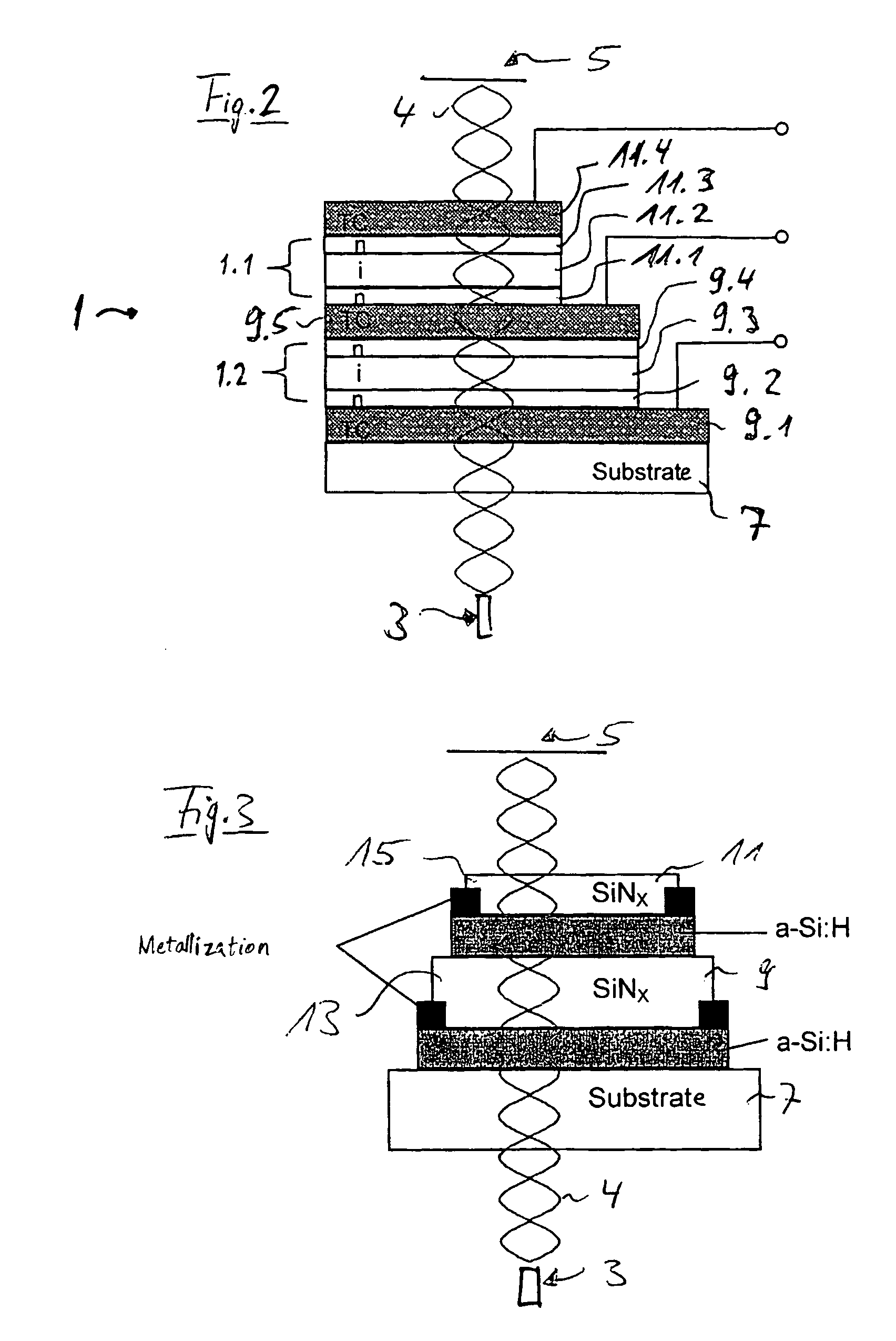Photosensor for a transmitted light method used for detecting the direction of movement of intensity maxima and intensity minima of an optical standing wave
a transmitted light and photosensor technology, applied in the direction of converting sensor output optically, instruments, semiconductor devices, etc., can solve the problems of high cost and application of considerable technological resources, and achieve the effect of eliminating the expensive adjustment of transparent photosensors
- Summary
- Abstract
- Description
- Claims
- Application Information
AI Technical Summary
Benefits of technology
Problems solved by technology
Method used
Image
Examples
Embodiment Construction
[0023]FIG. 1 shows a schematic diagram of the passage of a standing wave through a photosensor of the invention. The layer thickness of the photoelectrically active layers ds1 and ds2 is
[0024]ds1≤λ4ns1Equation1ds2≤λ4ns2Equation2
where ns1 and ns2 are the indices of refraction of the photoactive layers ds1 and ds2. In general, the phase condition may be described as modified
[0025]∑j=1lnjdj=kλ8-ds1ns12-ds2ns22Equation3
[0026]FIG. 2 shows a cross section of a photosensor 1 of the invention, to which the diagram of FIG. 1 is to be applied. The photosensor 1 is arranged between a radiation source 3 and a mirror 5. This arrangement is set up in such a way that the optical axis of a standing wave 4 produced by the radiation source 3 passes perpendicularly through the thickness of the photosensor 1 and is perpendicularly incident on the mirror. The photosensor 1 comprises a substrate 7, which may be composed of glass, quartz, or plastic. If a plastic substrate is selected, it ma...
PUM
 Login to View More
Login to View More Abstract
Description
Claims
Application Information
 Login to View More
Login to View More - R&D
- Intellectual Property
- Life Sciences
- Materials
- Tech Scout
- Unparalleled Data Quality
- Higher Quality Content
- 60% Fewer Hallucinations
Browse by: Latest US Patents, China's latest patents, Technical Efficacy Thesaurus, Application Domain, Technology Topic, Popular Technical Reports.
© 2025 PatSnap. All rights reserved.Legal|Privacy policy|Modern Slavery Act Transparency Statement|Sitemap|About US| Contact US: help@patsnap.com



